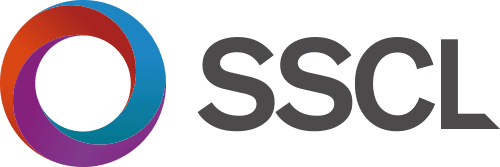Carl Johnson, Programme Director, Customer Contact Services at SSCL knows the importance of customer experience and how innovative technology is key to delivering a service that continually adapts.
So, when it comes to understanding the current technology trends SSCL is confident that it has the right environment to capture its customer needs and translate these to find the best requirements from the current trends and predict what’s needed for the future.
Gartner’s 2021 Hype Cycle for Customer Service and Support Technologies recently outlined five key digital trends, how the technology will evolve over time, and how organisations benefit from these technologies throughout their lifetimes.
SCCL is delighted that it is already offering all these trends to its UK Government customers.
But Carl warns of the importance of staying ahead of the trends and the gap between expectations and reality.
Carl explains that SSCL’s focus on Customer Experience has shaped its strategy to continually look at emerging technologies: “We need to ensure industry is making the right investment because there’s a real and tangible benefit.
“To help us stay ahead of the curve SSCL is engaging now, and early, because we recognise these are things that will drive better experience in the future.”
Trend 1: Digital customer service
As Gartner rightly claims in its Hype Cycle, digital customer services needs to focus on end-to-end customer engagement. Carl points out that traditionally automation and other digital trends focus on narrow, specific parts of the customer journey, and to make a real difference the focus has to be much wider.
To provide a positive end-to-end experience to customers, both sides – contact centre agents and those who engage with their services – must be informed, in control and must never lose sight of the request until it’s been resolved.
Creating that seamless journey, regardless of context, channel or customer objective, is vital, and is something that SSCL has been able to provide through a combination of intelligent automation, online and direct engagement, embedding knowledge management at the point of engagement, and through comprehensive CRM functionality. Individually these are important but when combined they give the end user contacting SSCL a personalised and uninterrupted experience.
Trend 2: Workforce Engagement Management (WEM) applications
Existing workforce optimisation applications are generally designed to support operational efficiency but may miss employees’ concerns over wellbeing and engagement. At SSCL we’ve brought in a range of advanced workforce management solutions, but rather than only using these to optimise how many people are needed in the contact centre at one time, we now use the technology to better understand how we can develop our agents’ skills, ability and knowledge, using the data provided by the technology to support colleagues, and improve their skills, while enabling contact centre managers to handle their workforce in a holistic manner.
Trend 3 – Customer engagement hubs (CEHs)
Customer engagement hubs are architectural frameworks that tie multiple systems together to proactively engage customers and ensure contextually-relevant interactions throughout the entire customer journey – something which SSCL is very much focused on.
SSCL’s myHub solution is a one-stop portal for users to quickly access guidance, knowledge and data in real-time, via department and personal devices, offering new services, tools and screens, and simplifying user access to SSCL services.
With Gartner estimating that marketing, digital commerce and sales departments will join with IT leaders to develop plans for CEHs, Carl says of myHub: “We built and deployed myHub two years ago and, at the time, it was designed to be a place where users could obtain knowledge, process and instruction on how to complete particular services within SSCL. Deployed to nine different departments, it has been hugely successful.”
He added: “But it can’t stop there, and that’s the point of Customer Engagement Hubs. For example this year we have introduced the ability for users to sign in as actual users, rather than generic department employees, so they can obtain personalised details about SSCL’s services. We are deploying advanced expense management services, including specific payroll and HR activities within the hubs. On top of this, we are also deploying the same functionality to a mobile app, meaning users, wherever they are and whatever context they’re in, can access the same services.”
Putting this into context SSCL has 250,000 government employees who use the award-winning myhub, and we receive around 180,000 visits monthly – almost 75% of our customers use myHub every single month –– this is huge! We’re offering a one stop portal where are users are accessing information daily and we’re about to have our one millionth page accessed.
Trend 4 – Communications Platform as a Service (CPaaS)
CPaaS is a cloud-based middleware platform on which organisations can build, run, and distribute communication software. Gartner predicts, that CPaaS is the next step in the future of the contact centre and will move contact centres beyond just omnichannel, and into the ability for customers to engage with an organisation wherever they want, on whatever terms and channels they choose and in their own words. CPaaS enable customers to control all aspects of their interaction with an organisation.
SSCL incorporated this into its strategy nearly two years ago when it developed its Intelligent Ecosystem. Its new contact centre platform offering delivered through Amazon Web Services called SSCL Connect+ has modernised its telephony systems, links to Live Chat and contact automation, exploiting the benefits of single signon within myHub, and the workflow management tools, delivered by Pega systems.
These partnerships mean SSCL can now build and exploit journeys that allow users the freedom to select their channel of choice, while ensuring SSCL can deliver the appropriate solution, resource or content, first time, bringing SSCL services to the user rather than requiring the user to come to us.
Trend 5 – Customer service analytics
Finally, customer service analytics, while not new, is set to become even more important when organisations create service ecosystems. Carl explains: “Customer service analytics is about understanding the users’ experience wherever and whenever they are. It’s not just about being able to communicate with them, or even just about bringing services to them, but it’s understanding how that experience was for them, and what can be done better next time, regardless of the outcome, channel or tools. It’s about understanding each step in the journey, end to end, and not only focusing on getting a good result at the finish, as important as this is.”
He adds: “This is something we do at SSCL by looking at the analytics that comes from our hubs, surveys and apps. By combining the data, we get an overall image, not just a snippet as to the end result, but of all the activities that happen within it. We can then act on this information to drive better journeys for customers.”
Final thoughts
The Gartner trends paint a positive outlook for those looking to improve their customer experience through digital innovation.
SSCL is delighted to be ahead of the curve, already utilising these technologies to help provide customers with the seamless, end-to-end journey they desire.

